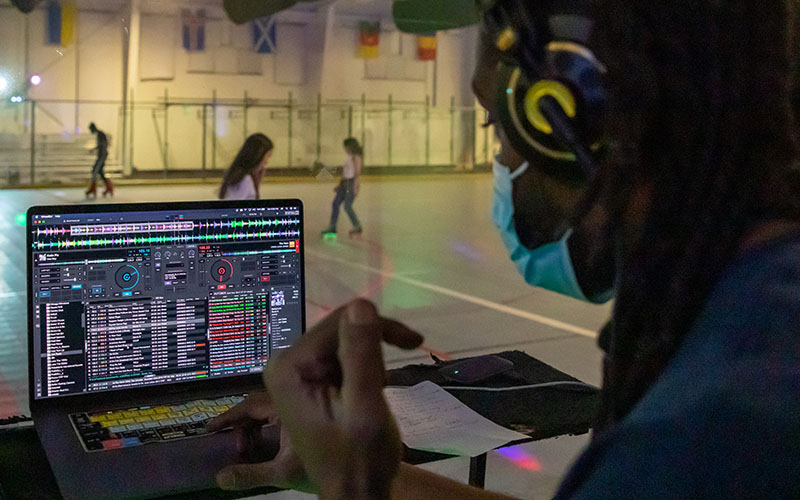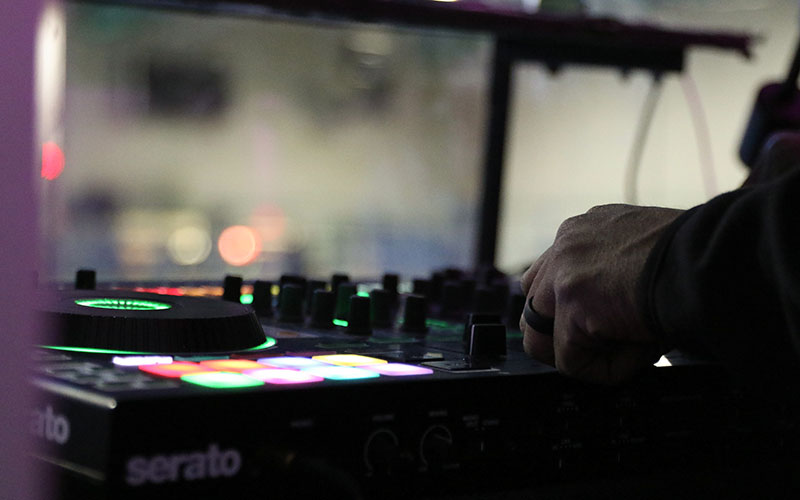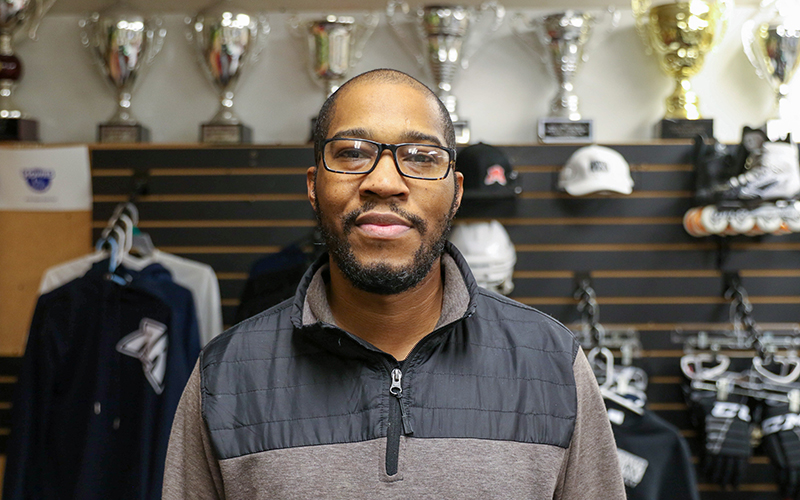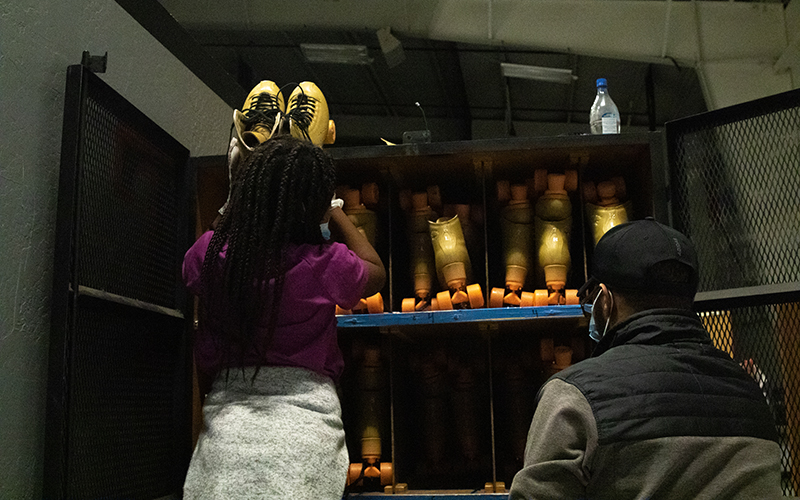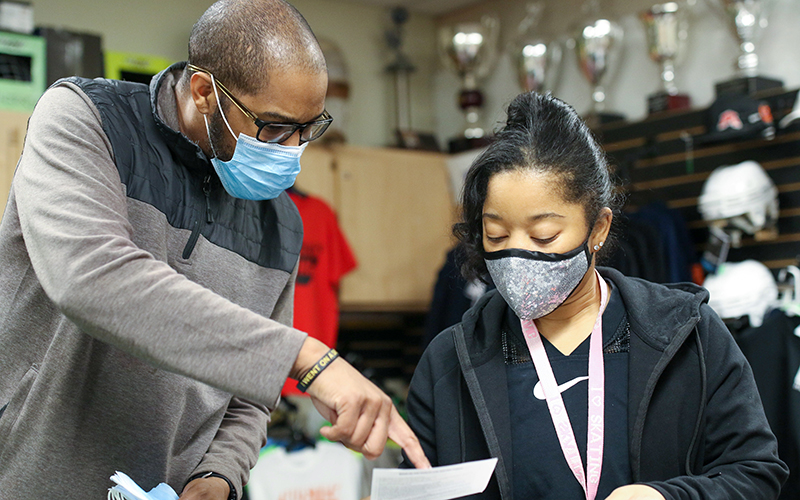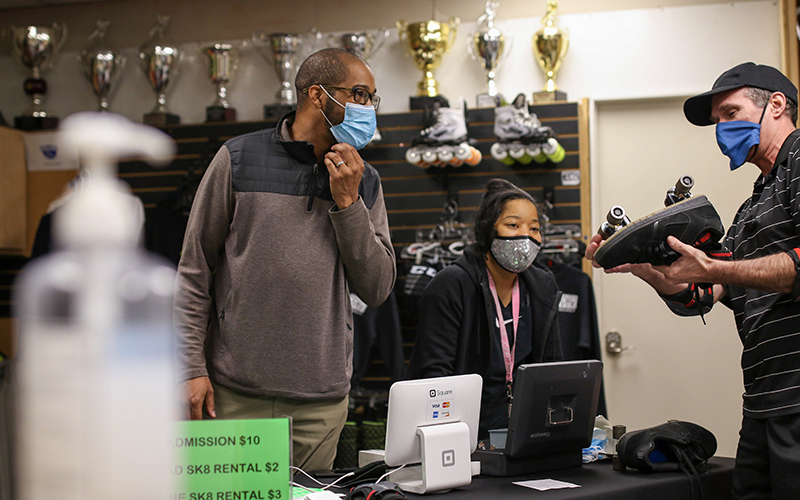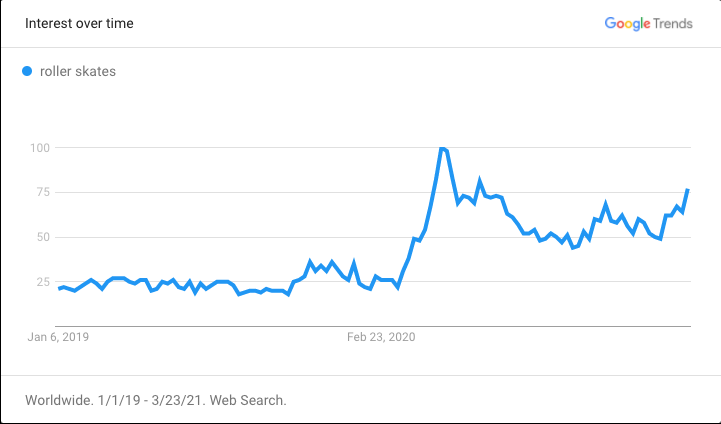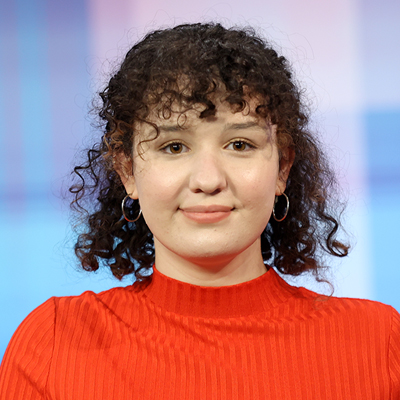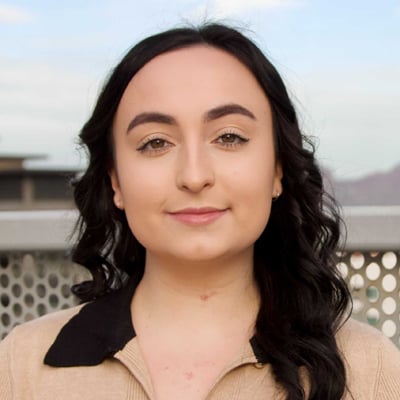“As a skating rink, we couldn’t even get skates (from distributors) because that many people had bought them to skate outside,” Wahlig said. “To skate in the basement, to skate in the warehouse, wherever they were able to escape.”
Terry Currie agrees. “Anywhere there is a flat surface, they’ll roll,” he said.
Trends like these led the Toe Stoppas to new spaces such as the Lab, a gym in Chandler usually home to basketball tournaments, and Peoria Sportsplex.
“If rinks are cookie cutters, we are a completely different mold,” Terry Currie said.
The Toe Stoppas Facebook group boasts over 1,300 members, with members sharing meet-ups, home-grown roller skating lessons, videos of them skating, and more. Skating lessons and sessions popped up from Queen Creek to Peoria.
“We’ve been doing this for 11 years. And I don’t plan on stopping any time soon,” Terry Currie said. “Growing up in Chicago, that’s how we stayed out of trouble. I want to be able to provide that same release, same outlet, same experience, same fun. It is a family thing.”
In this case, a family is more than what you’re born into, it’s a skate family, he said.
“I want to get that family back together.”
The pandemic won’t stop them from being together, either.
Family, by blood and by skate
Terry Currie had just returned home to spend a few hours with his family after preparing for that night’s skate session when a little girl came calling – “Daddy!”
“Hey baby,” Terry Currie said gently. “We’re going to have fun today.”
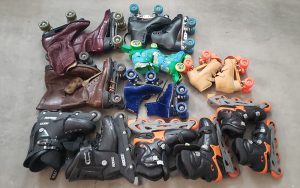
Terry Currie’s family of four has a large collection of roller skates, including Terry’s father’s pair of eel-skin cowboy boots, which are more than 20 years old. (Photo courtesy of Terry Currie)
His 3-year-old daughter Shaun, who is named after Terry and Anthony Currie’s mother, already has two pairs of roller skates. Skates are like pairs of shoes, replaced not quite as often as feet grow. They skate together weekly as a family.
“I want to raise roller skaters,” Terry Currie said.
For Terry and Anthony Currie, roller skating goes back to when they were little kids. The brothers learned how to skate from their mother, Shaun.
“My mom said, when she had two kids as a single mom, that she wasn’t gonna let us stop her from roller skating,” said Terry, whose first pair was black with thick royal blue laces. “My mom bought them bigger than our feet, and we had to wear multiple pairs of socks to fill in the space until our feet grew into the skates.”
In Chicago, the Currie brothers started off rolling at Glenwood as a family to gospel music, going with their mom until they were old enough to do so on their own. It wasn’t until they were teenagers that they started skating to hip hop and R&B.
For Niecy Towns, roller skating was a family tradition, too. She was 5 when she got her first pair of skates – white with pink laces – which she shared with her younger brother.
“I’ve been skating since I was practically out of the womb,” Niecy said. “My brother would have one shoe and one skate, and so did I. He didn’t care that they were too big, he just wanted to skate.”
Her daughter, L.J., got her first pair of skates when she turned 5 years old, just as Niecy had.
At an event in Chandler, they make room for the joy that comes with lacing up a pair of roller skates and grooving to a favorite song with friends and family on eight wheels.
Towns welcomes skaters as they arrive, followed by eager hellos and how have you beens.
From the sidelines, a young woman laces her low–cut skates, the silver stripes reflecting the rapidly changing colors beaming from the DJ booth. Another live streams on her Instagram page as skaters whir by. On the freshly polished wooden gym floor, an older couple ballroom dances on quad skates, hands locked together. They whip around each other, and they only slow down to occasionally pull their masks back over their noses.
A bright purple glow fades into greens, blues and yellows. From the glass doors that open to the euphoria inside, music echoes softly into the night.
